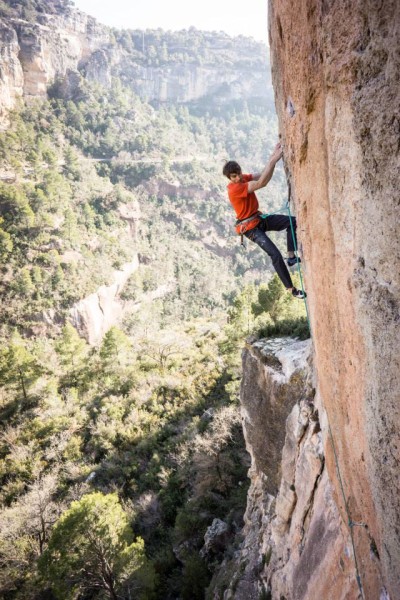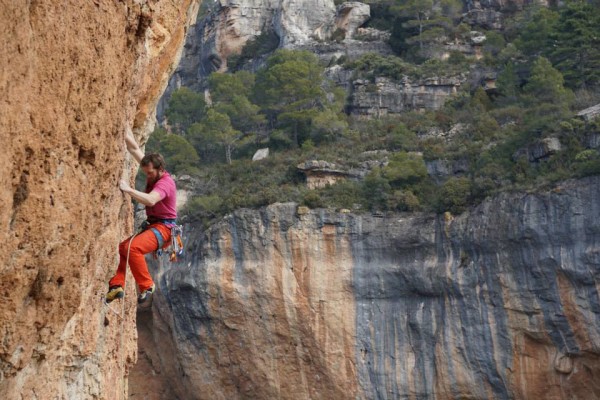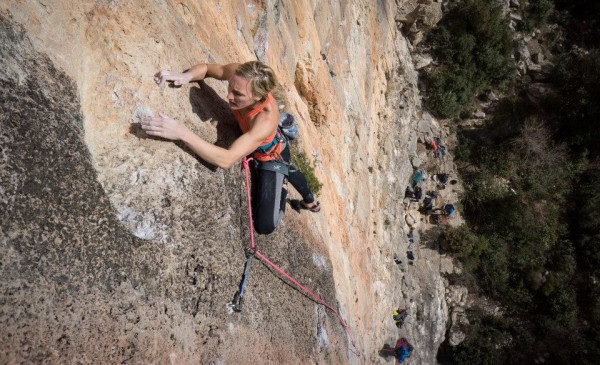“The first step is realizing that it’s possible,” Ethan Pringle advised me. While climbing in Siurana, a crimpy limestone area in Catalonia, Spain, I wanted to onsight 7b+ (5.12c). I’d managed to tick off a number of 7a+ (.5.12a) routes and had built a solid base. The past few days, I’d been trying more 7bs (5.12b).
“An onsight is successfully sending a route on your first try without any information/beta,” wrote Andrew Bisharat in his blog post on Evening Sends. My trip to Spain has involved a lot of different climbing areas and a ton of varied terrain. While I’ve tried a couple routes more than once, the name of the game has been to sample as much as possible. Visiting new crags regularly meant onsighting everything from steep tufa routes to low angle crimpy faces. Ethan and I talked a bit about improving our onsighting game.
Warming up to the process is important. Every day, I go through a series of easier routes before I try to onsight at my limit. My limit is about a number grade easier than I can redpoint. While warming up, I hang the draws as much as possible. On the easier climbing I consciously practice climbing techniques that make climbing a vista easier. I breathe well and sometimes do what Ethan calls “horse face.” I make a burr motion with my lips to relax the muscles in my face. From the base, I scan the route for big rests and look for chalked holds. The direction that the chalk faces is usually an indication of which way the hold faces.

While climbing in southern Spain, onsight master Hazel Findlay’s advised me to, “Have wide eyes and a long neck.” She encouraged me to move my eyes in slow arcs from lower left to lower right, taking in as much of the wall as possible. Seeing a hold can make the difference between sending and falling.
Pringle and I watched videos of climbing superstar, Adam Ondra who has onsighted 9a. He moves quickly through sequences. “He doesn’t hang onto the holds for very long,” noted Ethan Pringle. I worked on developing a decisive rhythm to my climbing.

“Just decide to do it.” Ethan’s words echoed in my head on a bouldery 7b last week. I had warmed up well and looked at the difficult sequence above. I grabbed the holds as best as I could and committed to a sequence. A few seconds later, I was through the crux. I breathed and fought through the slab finish. Success.
Ethan had suggested another route, Morena Corwin (7b+). The route follows a crack line and features good holds. I managed to stem and layback through the opening sequence. I began a traverse right near the top. A few feet would put me at the anchor. I placed my right foot and stood. Then I slipped. I hadn’t put enough force into my movement. I easily sent the route my second try.
One of the most important things I’ve learned in the process is to try as hard as you can and if you fall, be ok. Learn from the experience, how to move over the stone faster and more efficiently. Lastly, I’ve learned to keep trying.

